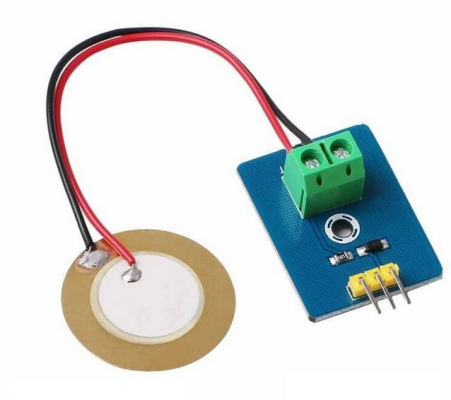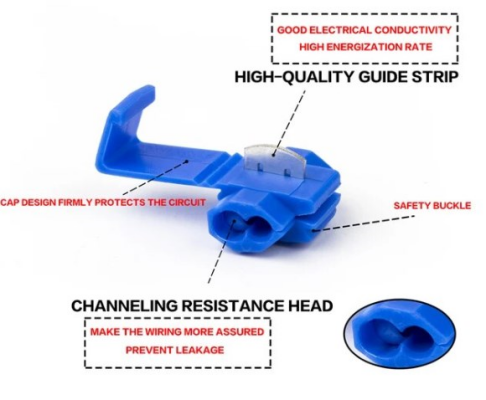In today's rapidly advancing industries, efficient wire splicing techniques are crucial for seamless connectivity. Ultrasonic wire splicing is a fascinating technology that revolutionized cable and wire joining. Let's explore what an ultrasonic wire splice is and how it revolutionizes wire splicing in various sectors.
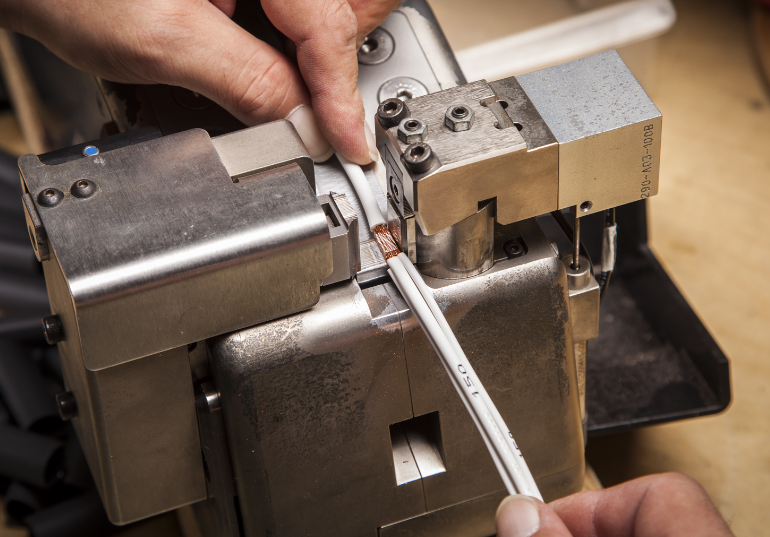
Question 1: What Is Ultrasonic Wire Splice
An ultrasonic wire splice is a type of wire bonding technology that uses ultrasonic energy to join two or more wires together without the need for additional solder or adhesives. This process involves the use of high-frequency vibrations (ultrasonic vibrations) to create friction and heat at the wire junction, which then fuses the wires together in a solid and reliable bond. Ultrasonic wire splicing is often used in industries such as electronics manufacturing, automotive, and aerospace for creating strong and durable connections between wires without the risk of introducing foreign materials or impurities into the bond.
Question 2: How Does Ultrasonic Wire Splicer Work
Ultrasonic wire splicers work by utilizing high-frequency mechanical vibrations to create heat and pressure at the junction of the wires being joined. Here's a general overview of how an ultrasonic wire splicer works:
-
Preparation: The wires to be spliced are prepared by stripping off the insulation at the ends that need to be joined.
-
Clamping: The stripped ends of the wires are inserted into a specially designed clamp or tool within the ultrasonic wire splicer that holds the wires securely in place.
-
Application of Ultrasonic Energy: The ultrasonic wire splicer then applies high-frequency ultrasonic vibrations to the wire junction. These vibrations create friction and heat at the contact point where the wires overlap.
-
Bonding: The combination of heat from the friction and pressure at the wire junction causes the metal in the wires to soften and merge together, forming a solid bond. The ultrasonic energy also helps to eliminate surface oxides and contaminants, ensuring a clean and reliable connection.
-
Cooling: After the ultrasonic energy is applied for a specific duration, the splicer allows the newly bonded wires to cool down and solidify, creating a strong and durable connection.
-
Quality Control: Some ultrasonic wire splicers may have built-in quality control features to ensure that the splice is formed correctly, such as monitoring the applied energy, pressure, and other parameters.
Overall, ultrasonic wire splicers offer a fast, precise, and reliable method for joining wires without the need for additional materials like solder, making them a popular choice in various industries for applications that require high-quality and consistent wire connections.
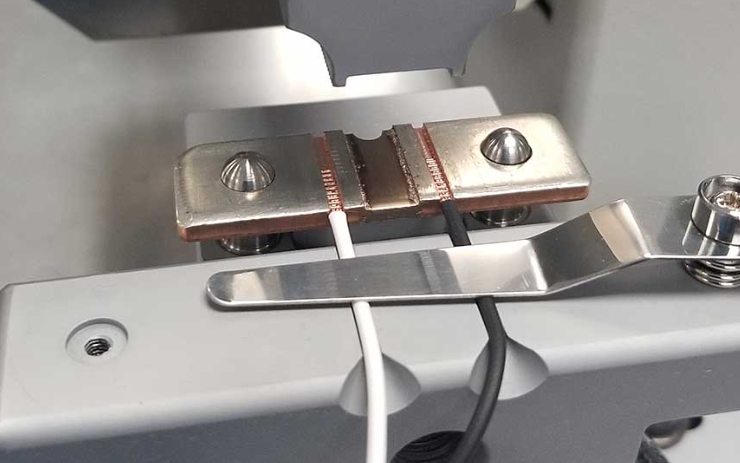
Question 3: How Strong Is Ultrasonic Welding
Ultrasonic welding is known for creating strong and reliable bonds between materials, including metals, plastics, and other materials. The strength of an ultrasonic weld primarily depends on several factors:
-
Material Compatibility: The materials being welded must be compatible in terms of their composition and properties to create a strong bond. Ultrasonic welding works well with a wide range of materials, but the specific characteristics of the materials being joined can influence the strength of the weld.
-
Process Parameters: Parameters such as the amplitude of ultrasonic vibrations, welding time, pressure applied during welding, and welding energy play crucial roles in determining the strength of the weld. Optimal process parameters are essential for achieving strong welds.
-
Surface Preparation: Proper cleaning and preparation of the surfaces to be welded are crucial for ensuring a strong bond. Contaminants, oxides, or other impurities on the surfaces can weaken the weld.
-
Joint Design: The design of the joint where the materials are joined can impact the strength of the weld. Proper joint design that maximizes the contact area between the materials can lead to stronger welds.
-
Quality Control: Ensuring consistency in the welding process, monitoring critical parameters during welding, and conducting quality control checks can help maintain the strength and integrity of the welds.
Overall, when performed correctly with suitable materials and optimized process parameters, ultrasonic welding can produce high-strength bonds that are durable and reliable. Ultrasonic welding is commonly used in various industries, including automotive, electronics, medical device manufacturing, and packaging, where strong and consistent welds are essential.
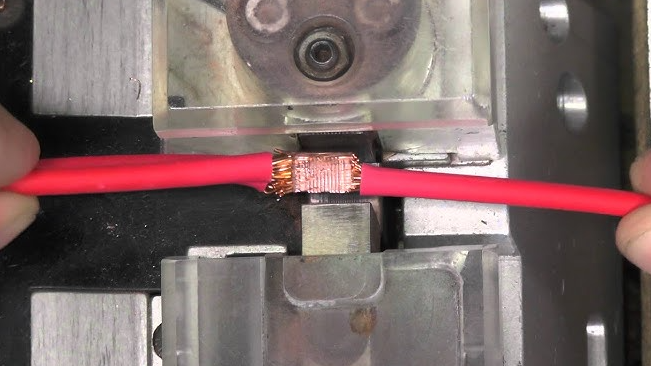
Question 4: The Advantages of Ultrasonic Welding
Ultrasonic welding offers numerous advantages that make it a popular choice for joining materials in various industries. Some of the key advantages of ultrasonic welding include:
-
Speed and Efficiency: Ultrasonic welding is a fast process, with welding cycles typically completed in milliseconds to seconds, making it suitable for high-volume production environments.
-
No Need for Additional Materials: Ultrasonic welding does not require additional materials such as adhesives, solder, or fasteners, reducing material costs and simplifying the manufacturing process.
-
Clean and Environmentally Friendly: Since ultrasonic welding does not involve the use of adhesives or solvents, it is a clean and environmentally friendly joining method. It produces no fumes, smoke, or byproducts.
-
Strong and Reliable Bonds: When performed correctly, ultrasonic welding produces strong and durable bonds between materials, ensuring dependable and long-lasting connections.
-
Versatility: Ultrasonic welding can be used to join a wide range of materials, including metals, plastics, and composites, providing versatility in manufacturing applications.
-
Precise and Consistent Welding: Ultrasonic welding offers high precision in controlling welding parameters such as energy, pressure, and amplitude, leading to consistent and repeatable weld quality.
-
Localized Heating: Ultrasonic welding generates heat at the weld interface, minimizing heat-affected zones in the surrounding material and reducing the risk of thermal distortion or damage.
-
Automation Compatibility: Ultrasonic welding is well-suited for automation, allowing for integration into robotic systems for increased productivity and efficiency in manufacturing processes.
-
No Mechanical Fasteners: Ultrasonic welding eliminates the need for mechanical fasteners like screws or rivets, resulting in aesthetically pleasing joints and reducing part count and assembly time.
-
Low Energy Consumption: Ultrasonic welding typically consumes less energy compared to other welding processes, contributing to cost savings and energy efficiency.
These advantages make ultrasonic welding a preferred choice for a wide range of applications in industries such as automotive, electronics, medical devices, textiles, packaging, and more.
Question 5: The Difference Between Ultrasonic Welding and Soldering
Ultrasonic welding and soldering are two distinct processes for joining materials, each with its own advantages and applications. Here are some key differences between ultrasonic welding and soldering:
-
Joining Mechanism:
- Ultrasonic Welding: Ultrasonic welding creates a bond by using mechanical vibrations and pressure to weld materials together without the need for additional filler materials. The materials are fused together at the molecular level through frictional heat.
- Soldering: Soldering is a process that uses a lower melting point metal alloy, called solder, to join two materials together. Soldering forms a connection by melting the solder and allowing it to flow into the joint.
-
Materials Joined:
- Ultrasonic Welding: It is typically used for joining metals, plastics, and composites.
- Soldering: Soldering is commonly used for joining electrical components, such as wires, circuit boards, and electronic components.
-
Strength of the Joint:
- Ultrasonic Welding: Ultrasonic welding produces strong, reliable, and durable joints due to the fusion of materials at the molecular level.
- Soldering: Soldered joints may not be as mechanically strong as ultrasonically welded joints, as the strength of soldered connections relies on the strength of the solder material.
-
Temperature:
- Ultrasonic Welding: Ultrasonic welding is a low-temperature process since it generates localized heat at the joint area without significantly heating the surrounding material.
- Soldering: Soldering involves the use of heat to melt the solder, which can potentially affect the properties of the materials being joined, especially if they are heat-sensitive.
-
Material Compatibility:
- Ultrasonic Welding: Ultrasonic welding is compatible with a wide range of materials including metals, plastics, and some other materials.
- Soldering: Soldering is generally limited to materials that can be wetted by the solder alloy, such as metals.
-
Process Complexity:
- Ultrasonic Welding: Ultrasonic welding typically involves simpler equipment and processes compared to soldering, as it does not require the use of flux, solder alloys, and complex heating systems.
- Soldering: Soldering may involve additional steps such as flux application, solder feeding, and temperature control to create a reliable joint.
Both ultrasonic welding and soldering have their respective advantages and are chosen based on the specific requirements of the application, the materials being joined, and the desired characteristics of the joint.

